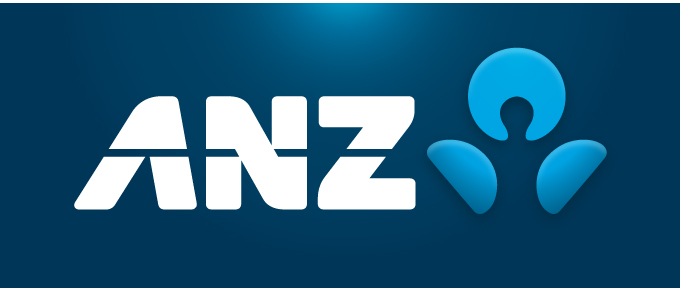
Where there's a will there's a way
Just two years after ANZ’s global-markets business set clear goals and implemented a women in leadership workstream, the bank says the initiative is bearing fruit. Progress is visible to staff, customers and other stakeholders. The focus on diversity and inclusion continues as ANZ is now looking ahead with a five-year plan, including stretch goals.
The women in leadership (WIL) working group has representatives from across ANZ’s global-markets business, which has more than 1,200 employees including about 50 in capital markets. Since 2017, the global-market diversity and inclusion (D&I) strategy has been aligned with that of the wider institutional division’s D&I strategy.
Relative to the overall business, capital markets stand out. Within a year, women in leadership roles – defined by director level and above – have increased to 35 per cent from 29 per cent. This includes recent promotions for Carolyn Ng, to lead ANZ’s capital-markets business in New Zealand, Jenny Fan and Louise Yang, to co-lead its North-Asian DCM operations, as well as Gwen Greenberg, who is head of corporate DCM for Australia.
Paul White, recently appointed head of markets USA at ANZ and co-sponsor of the WIL working group, suggests the capital-markets segment is in a strong position to support the continued improvement of diversity in leadership roles. “D&I has always had considerable focus within the team but the initiatives we have introduced have had a direct impact over the last year,” he says.
Why WIL?
The main WIL working group has 13 members with various sub-working groups within it. Group members are diverse in gender, geography and business line and, according to White, the capital-markets business is well represented. Even though D&I is a focus in the markets it serves, ANZ’s priority is to drive forward its own progress.
Suzy Ramos, WIL volunteer and director, DCM and syndicate at ANZ in Sydney, comments: “There has been significant change in the last 12-18 months and we have seen the market in general progressively evolve over the past 5-10 years. It has become easier to organise appropriately gender-balanced events, for example. Previously we would have more difficulty ensuring the discussion is representative of diverse people.”
Ramos says some customers are highlighting D&I as a serious consideration when they appoint banks to a transaction. “This is certainly becoming more of a factor in the decision-making process than we have seen in previous years,” she adds.
White reveals some client meetings focus on diversity even ahead of business or coverage. “Our customers are diverse and each has its own diversity targets. If we are aligned with our customers, it leads to better outcomes,” he explains. “It all feeds through to a stronger bottom line.”
The WIL initiative was initially based on feedback from town-hall meetings held globally and the universal feedback was that ANZ’s employees wanted the bank to do more to embrace diversity considerations. This gave rise to a body of work, including scrutinising available data, to understand the pipeline of opportunities. Ramos explains that a collection of individuals expressed interest in contributing their time and expertise to the workstream. “We volunteer our time to participate, as we share the common belief that this is an initiative requiring our focus,” she says.
“Our customers are diverse and each has its own diversity targets. If we are aligned with our customers, it leads to better outcomes. It all feeds through to a stronger bottom line.”
Button TextEmma Fletcher, ANZ’s Melbourne-based head of talent and culture, explains that WIL complements ANZ global markets’ longstanding risk-culture programme. She adds that it is one of three key pillars in the global-markets culture programme, which is aligned with the strategic focus of the business.
“The WIL working group has made a significant impact,” Fletcher says. “The initiatives delivered link across our existing talent and culture programmes. Currently these include a mentoring programme and a regular internal and external speaker series. Going forward, and to deliver the step change in our five-year strategy for WIL, we plan to move it to a more formal arrangement – including further investment and enhanced programme offerings.”
Other WIL working group activities so far have also included “brown bag lunches”, providing staff across the business the opportunity to raise issues as they see them and offer solutions. Another example is the approach to advertising job openings. White says there is a clear desire to ensure these embrace D&I and display no bias.
Fletcher adds: “Taking account of feedback received, we ensure we are using neutral language when hiring. We know women sometimes simply don’t apply for a role because they don’t think they meet all the criteria. Two of our WIL working-group members with appropriate experience in hiring are on call to screen job advertisements and provide suggestions to our hiring managers.”
Fletcher also explains that ANZ encourages its leaders to use their channels to circulate advertisements for available openings in their divisions and to talk about the roles “in a more human way”. This is done by using language to encourage individuals to consider applying.
“We know trading is an environment of scarce supply and high demand so we are looking at further initiatives to retain existing staff. We are also looking at pipeline management and building our supply from within and externally.”
Button TextAddressing challenged segments
ANZ acknowledges some segments of its business are more challenged when it comes to D&I. Fletcher explains part of the bank’s five-year strategy is to ascertain how it can make a more positive impact and improve gender balance in traditionally male-dominated roles.
Trading is one such role. Anshul Sidher, Singapore-based head of trading and markets, Asia, and the other co-sponsor of the WIL workstream, is constantly scouting the market for female traders with an appropriate match of skills and aptitude through merit-selection channels.
“We value a growth mindset. ANZ is a place where you can choose to broaden or deepen your skills depending on your career aspirations,” Fletcher explains. “The bank is in a unique position to support this thanks to the 32 markets in which we operate. We know trading is an environment of scarce supply and high demand so we are looking at further initiatives to retain existing staff. We are also looking at pipeline management and building our supply from within and externally.”
White agrees that ensuring gender balance on the trading floor is challenging. “We have a graduate programme in which we rotate candidates throughout the institutional business,” he comments. “The more graduates that gain experience in trading through this rotation, the more opportunities this brings. We are prepared to take more risk to support the development and knowledge of particular skill sets, compared with less specialist roles.”
“There has been significant change in the last 12-18 months and we have seen the market in general progressively evolve over the past five to 10 years. It has become easier to organise appropriately gender-balanced events, for example.”
Button TextShifting the mindset
ANZ’s five-year stretch plan will incorporate lessons learned through the COVID-19 pandemic, turning temporary outcomes into more permanent solutions. Throughout the health crisis, the bank has been on high alert for signs of stress when it comes to staff welfare, and it now expects to undergo a shift in corporate mindset that will also apply new working approaches.
The experience in global markets over the last 18 months clearly demonstrates that flexibility works. “Several in the team have been able to engage in home-schooling by following a less conventional work schedule – effectively supplementing their workloads in the evening,” White says. “There is no reason why these arrangements cannot continue beyond current circumstances.”
With flexible working already on WIL’s agenda, this provides confidence there is scope for it to go further. “I think about the success of successfully embracing flexible working in Scandinavia,” White continues. “If we can replicate this around the globe, it will provide us with a big opportunity.”

WOMEN IN CAPITAL MARKETS Yearbook 2023
KangaNews's annual yearbook amplifying female voices in the Australian capital market.











